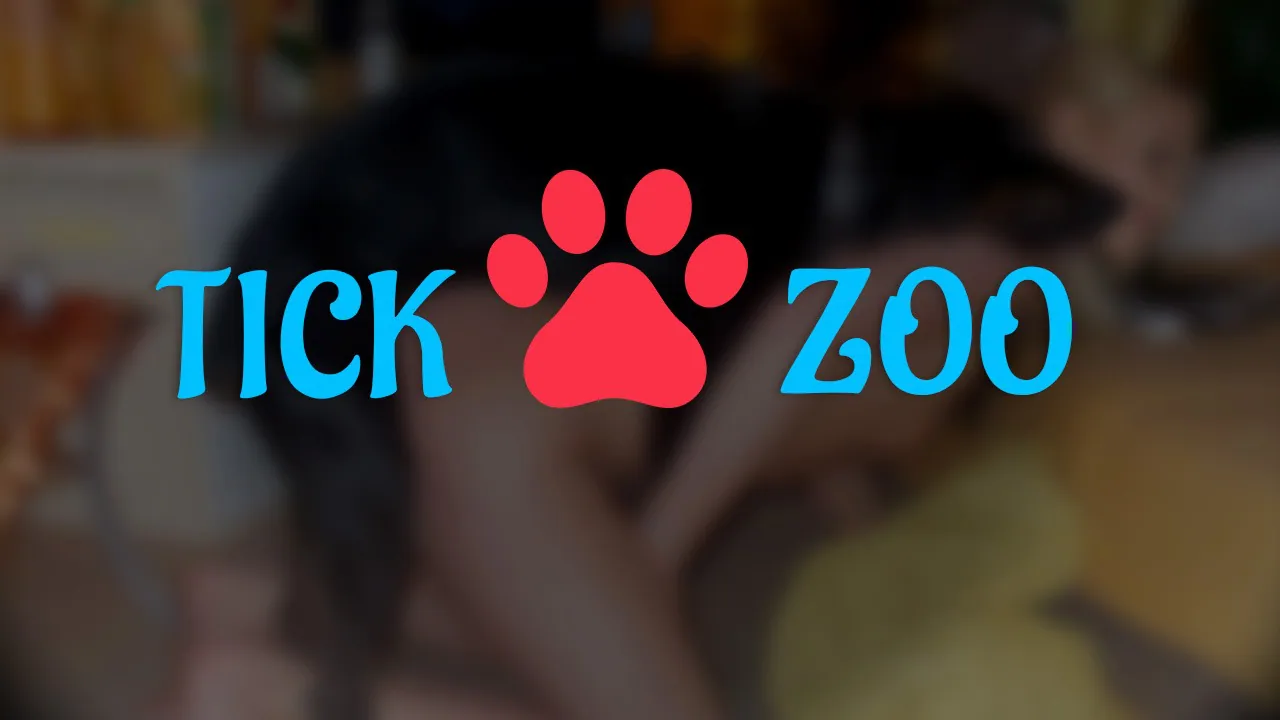Tickzoo: An In-Depth Guide To The Intricacies Of Tick Management
Tickzoo is an emerging term in the field of entomology, focusing on the comprehensive study and management of ticks and their habitats. As climate change and global travel increase tick populations and expand their geographical range, understanding tickzoo has become essential for public health, agriculture, and wildlife conservation. This guide aims to explore the intricate dynamics of tick ecology, control methods, and preventive strategies.
Ticks are small arachnids, often overlooked but significant due to their role as vectors of various diseases. Tickzoo encapsulates the complexities surrounding these creatures, including their life cycle, habitat preferences, and their interactions with hosts. It is crucial for researchers, healthcare professionals, and the general public to grasp the importance of tickzoo to mitigate tick-borne diseases effectively.
The concept of tickzoo not only encompasses the biological aspects of ticks but also delves into the socio-economic implications of their presence. It highlights the need for interdisciplinary approaches to control tick populations, from genetic studies to landscape management. This comprehensive guide serves as a valuable resource for anyone looking to understand and manage tick-related challenges.
Read also:Ultimate Guide To Understanding The Ny Mets Score
Table of Contents
- What is Tickzoo?
- Why Are Ticks Important?
- The Tick Life Cycle
- How Do Ticks Affect Humans and Animals?
- Tick-Borne Diseases
- Tickzoo Management Strategies
- What Are Natural Tick Control Methods?
- Chemical Control Methods
- Tick Habitat Modification
- How to Prevent Tick Bites?
- Tickzoo in Wildlife Management
- The Role of Climate Change in Tickzoo
- How Does Tickzoo Impact Agriculture?
- Future of Tickzoo: Research and Innovation
- FAQs
- Conclusion
What is Tickzoo?
Tickzoo is a term that refers to the study and management of ticks and their interactions with the environment and hosts. It encompasses the biology, ecology, and control of ticks, aiming to reduce the risks associated with tick-borne diseases. By understanding tickzoo, we can develop more effective strategies to manage tick populations and mitigate their impact on public health and ecosystems.
Why Are Ticks Important?
Ticks are crucial for several reasons. They are one of the most common vectors of diseases, affecting both humans and animals. Ticks play a vital role in ecosystems as they help regulate wildlife populations. However, their ability to transmit pathogens makes them a significant public health concern. Understanding their ecological roles and disease transmission dynamics is essential for effective management. Ticks also have economic implications, affecting agriculture and livestock industries. Controlling tick populations can prevent substantial economic losses and improve animal welfare.
The Tick Life Cycle
The tick life cycle consists of four stages: egg, larva, nymph, and adult. Understanding each stage is crucial for effective tick management. Here's a brief overview:
- Egg: Female ticks lay thousands of eggs in the environment. These eggs hatch into larvae within a few weeks.
- Larva: Larvae, also known as seed ticks, have six legs and seek out hosts for their first blood meal. After feeding, they molt into nymphs.
- Nymph: Nymphs have eight legs and are more active in seeking hosts. They also require a blood meal to molt into adults.
- Adult: Adult ticks are the largest stage and engage in mating. Female ticks require a blood meal to lay eggs, completing the cycle.
Each stage has specific habitat preferences and host interactions, influencing tick management strategies.
How Do Ticks Affect Humans and Animals?
Ticks affect humans and animals primarily through their role as disease vectors. They transmit various pathogens, including bacteria, viruses, and parasites, leading to illnesses such as Lyme disease, Rocky Mountain spotted fever, and anaplasmosis. The symptoms of tick-borne diseases can vary and may include fever, fatigue, and skin rashes. In animals, ticks can cause anemia, skin irritation, and transmit diseases like babesiosis and ehrlichiosis. Ticks also impact livestock productivity, leading to economic losses in the agriculture sector. The presence of ticks can reduce weight gain, milk production, and overall health in livestock.
Tick-Borne Diseases
Tick-borne diseases are a significant concern worldwide. Some of the most prevalent tick-borne diseases include:
Read also:Can Stretch Marks Fade A Comprehensive Guide To Skin Care And Treatment
- Lyme Disease: Caused by the bacterium Borrelia burgdorferi, Lyme disease is characterized by fever, headache, fatigue, and a distinctive skin rash.
- Rocky Mountain Spotted Fever: Transmitted by the American dog tick, this disease causes fever, rash, and potentially severe complications if untreated.
- Babesiosis: A parasitic disease affecting red blood cells, leading to symptoms like fever, chills, and anemia.
- Ehrlichiosis: Caused by bacteria of the genus Ehrlichia, this disease results in symptoms such as fever, headache, and muscle aches.
Timely diagnosis and treatment are essential to prevent severe health consequences from tick-borne diseases.
Tickzoo Management Strategies
Effective tick management requires a multi-faceted approach involving various strategies:
- Integrated Pest Management (IPM): Combines biological, cultural, and chemical control methods to manage tick populations sustainably.
- Public Education: Raising awareness about ticks, their habitats, and preventive measures can help reduce tick encounters.
- Vaccination: Developing vaccines for tick-borne diseases can provide long-term protection for humans and animals.
- Research and Surveillance: Ongoing research and monitoring of tick populations can help identify emerging threats and improve management strategies.
Combining these strategies can enhance the effectiveness of tick management efforts.
What Are Natural Tick Control Methods?
Natural tick control methods focus on reducing tick populations using environmentally friendly approaches. These methods include:
- Biological Control: Utilizing natural predators, such as certain bird species and predatory insects, to reduce tick populations.
- Habitat Modification: Altering the environment to make it less suitable for ticks, such as removing leaf litter and tall grasses.
- Essential Oils: Using plant-based oils like eucalyptus and lavender as repellents to deter ticks.
These methods offer sustainable alternatives to chemical control, minimizing environmental impact.
Chemical Control Methods
Chemical control methods involve using pesticides and acaricides to manage tick populations. These methods are often used in conjunction with other strategies for effective control. Key considerations include:
- Application Timing: Applying chemicals during peak tick activity periods can enhance effectiveness.
- Targeted Application: Focusing on specific areas where ticks are prevalent reduces chemical use and environmental impact.
- Resistance Management: Rotating chemicals and using them judiciously helps prevent resistance development in tick populations.
While chemical control can be effective, it is essential to use these methods responsibly and in combination with other strategies.
Tick Habitat Modification
Modifying tick habitats is a proactive approach to reducing tick encounters. Strategies include:
- Landscaping: Maintaining short grass and removing leaf litter and debris reduces tick habitats.
- Fencing: Using fences to keep wildlife, such as deer, out of residential areas can decrease tick presence.
- Integrated Vegetation Management: Strategically planting vegetation that deters ticks and their hosts.
These habitat modifications can significantly reduce tick populations in residential and recreational areas.
How to Prevent Tick Bites?
Preventing tick bites is crucial for reducing the risk of tick-borne diseases. Here are some effective measures:
- Clothing: Wear long sleeves, pants, and light-colored clothing to spot ticks more easily.
- Repellents: Use EPA-approved tick repellents on skin and clothing.
- Tick Checks: Conduct regular tick checks after spending time outdoors, especially in wooded or grassy areas.
- Showering: Showering soon after returning indoors can help remove ticks before they attach.
These preventive measures can significantly reduce the risk of tick bites and subsequent disease transmission.
Tickzoo in Wildlife Management
Tickzoo plays a vital role in wildlife management by ensuring the health and balance of ecosystems. Key aspects include:
- Wildlife Monitoring: Tracking wildlife populations and their tick burdens helps assess ecosystem health.
- Habitat Conservation: Preserving natural habitats reduces tick infestations by maintaining balanced ecosystems.
- Disease Surveillance: Monitoring tick-borne diseases in wildlife populations aids in early detection and control efforts.
Effective tick management in wildlife is essential for conserving biodiversity and protecting public health.
The Role of Climate Change in Tickzoo
Climate change significantly impacts tickzoo by influencing tick distribution, abundance, and disease transmission dynamics. Key effects include:
- Range Expansion: Rising temperatures enable ticks to expand into new geographical areas.
- Extended Activity Periods: Warmer climates prolong tick activity seasons, increasing the risk of tick-borne diseases.
- Host Interactions: Changes in wildlife behavior and distribution impact tick-host interactions.
Understanding how climate change affects tickzoo is crucial for developing adaptive management strategies to mitigate future risks.
How Does Tickzoo Impact Agriculture?
Tickzoo has significant implications for agriculture, affecting livestock health and productivity. Key impacts include:
- Animal Health: Ticks can transmit diseases that reduce livestock productivity and cause economic losses.
- Production Losses: Tick infestations can lead to decreased weight gain, milk production, and reproductive success in livestock.
- Control Costs: Managing tick populations incurs costs for farmers, including veterinary care and acaricide applications.
Effective tick management strategies are essential for maintaining livestock health and ensuring agricultural sustainability.
Future of Tickzoo: Research and Innovation
The future of tickzoo research and innovation holds promise for advancing our understanding and management of ticks. Key areas of focus include:
- Genetic Studies: Exploring the genetic makeup of ticks can provide insights into resistance mechanisms and potential control targets.
- Vaccine Development: Developing vaccines for tick-borne diseases can offer long-term protection for humans and animals.
- Technology Integration: Utilizing technology, such as remote sensing and GIS, for monitoring and managing tick populations.
Innovation and research in tickzoo are essential for addressing emerging challenges and advancing tick management strategies.
FAQs
What is the best way to remove a tick?
The best way to remove a tick is to use fine-tipped tweezers. Grasp the tick as close to the skin's surface as possible and pull upward with steady, even pressure. Avoid twisting or jerking the tick, as this can cause mouthparts to break off and remain in the skin.
Can ticks transmit diseases to pets?
Yes, ticks can transmit various diseases to pets, including Lyme disease, ehrlichiosis, and babesiosis. Regular tick checks and the use of veterinarian-recommended tick preventatives can help protect pets from tick-borne diseases.
Are all ticks dangerous?
Not all ticks are dangerous, but some species can transmit harmful pathogens to humans and animals. It's important to be aware of the tick species in your area and take appropriate preventive measures.
How can I make my yard less attractive to ticks?
To make your yard less attractive to ticks, keep grass trimmed short, remove leaf litter and debris, and create a barrier of wood chips or gravel between wooded areas and your lawn.
Do ticks have any natural predators?
Yes, ticks have natural predators, including certain bird species, ants, and spiders. Encouraging these predators in your yard can help reduce tick populations naturally.
What should I do if I find a tick on my body?
If you find a tick on your body, remove it promptly using tweezers. Clean the bite area with soap and water or rubbing alcohol. Monitor for any symptoms of tick-borne diseases and seek medical attention if necessary.
Conclusion
Tickzoo encompasses the comprehensive study and management of ticks, their habitats, and their impact on public health and ecosystems. By understanding the complexities of tick biology, disease transmission, and control methods, we can develop effective strategies to manage tick populations and mitigate the risks associated with tick-borne diseases. As climate change and global travel continue to influence tick dynamics, ongoing research and innovation in tickzoo are essential for addressing emerging challenges and ensuring a healthier future for humans and animals alike.
Article Recommendations

